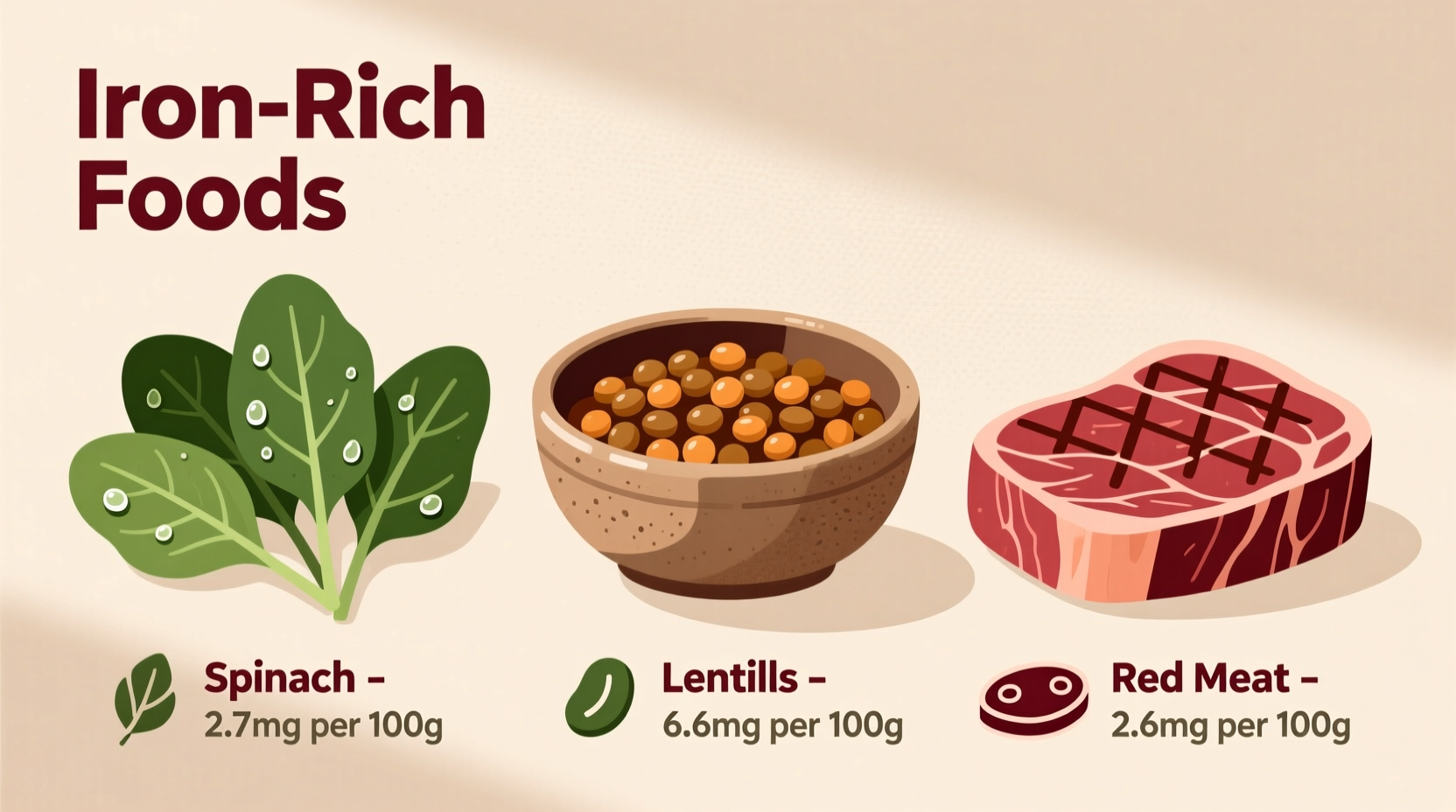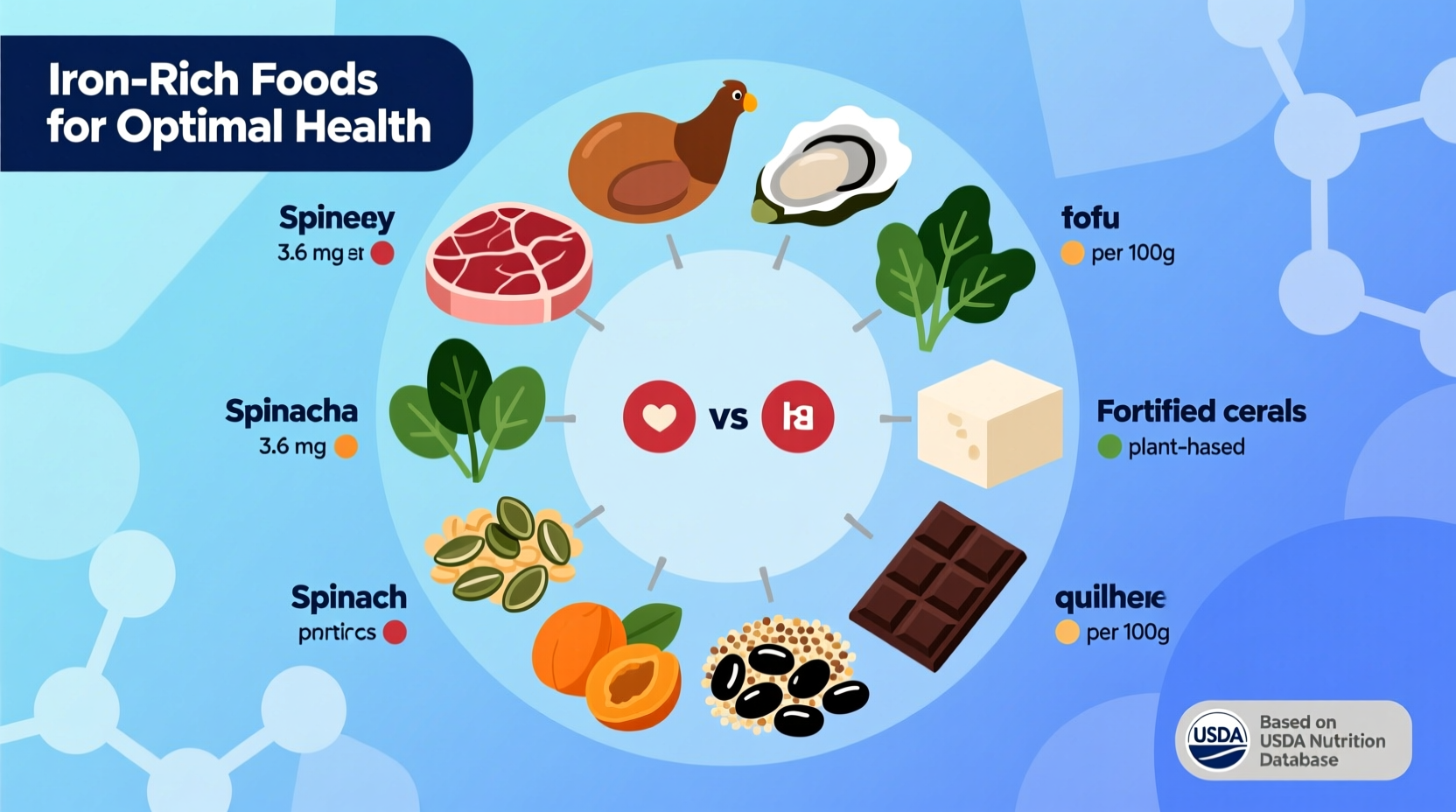Iron deficiency affects over 1.2 billion people worldwide according to the World Health Organization, making it the most common nutritional deficiency globally. Understanding which foods deliver the highest iron content—and how to maximize absorption—can transform your energy levels and overall health. This guide reveals science-backed iron sources ranked by bioavailability, with practical strategies to incorporate them into your daily meals.
Why Iron Matters: Beyond Just Energy
Iron serves as the cornerstone of hemoglobin production, carrying oxygen from your lungs to every cell. But its role extends far beyond preventing fatigue. Recent research published in the American Journal of Clinical Nutrition confirms iron's critical function in cognitive development, immune response, and temperature regulation. When levels dip below optimal ranges, even mild deficiency can impair concentration and weaken immune defenses—often before anemia develops.
Heme vs. Non-Heme Iron: The Absorption Difference
Not all iron is created equal. Understanding these two forms explains why some iron-rich foods deliver more nutritional benefit:
- Heme iron (from animal sources): 15-35% absorption rate. This highly bioavailable form directly enters intestinal cells.
- Non-heme iron (from plant sources): 2-20% absorption rate. This form requires conversion and faces absorption inhibitors.
The National Institutes of Health reports that vegetarians need nearly twice the iron intake of meat-eaters due to this absorption difference. But strategic food pairing can significantly boost non-heme iron uptake—something we'll explore in the practical strategies section.
Top 10 Iron Powerhouses: Ranked by Bioavailability
Based on USDA FoodData Central nutrient analysis, these foods deliver exceptional iron value when considering both quantity and absorption potential:
| Food (100g serving) | Iron (mg) | Absorption Rate | Best Paired With |
|---|---|---|---|
| Oysters | 6.1 | 18% | Lemon juice |
| Liver (beef) | 6.5 | 15% | Broccoli |
| Pumpkin seeds | 8.8 | 10% | Strawberries |
| Lentils (cooked) | 3.3 | 8% | Tomato sauce |
| Spinach (cooked) | 3.6 | 7% | Vinegar dressing |

Maximizing Your Iron Absorption: Science-Backed Strategies
Simply consuming iron-rich foods isn't enough—how you combine them determines actual nutritional benefit. The Journal of Nutrition's 2023 review revealed these evidence-based absorption boosters:
Vitamin C Pairing
Adding just 100mg of vitamin C (about half an orange) can triple non-heme iron absorption. Try these combinations:
- Lentil soup with lemon squeeze
- Spinach salad with bell peppers
- Oatmeal topped with strawberries
Avoiding Absorption Blockers
Calcium and tannins can inhibit iron uptake by 50-60%. The NIH recommends separating these foods by 2-3 hours:
- Coffee/tea (tannins)
- Dairy products (calcium)
- Whole grains (phytates)
Daily Iron Requirements: Tailored to Your Needs
The National Academy of Medicine established these daily requirements, but individual needs vary significantly based on physiology and lifestyle factors:
- Men (19+ years): 8 mg
- Women (19-50 years): 18 mg (menstruation increases needs)
- Pregnant women: 27 mg
- Vegans/vegetarians: 1.8x higher than meat-eaters
A 2024 study in Nutrients journal found that endurance athletes may require up to 70% more iron due to increased turnover and sweat losses—a crucial consideration often overlooked in general recommendations.
Practical Meal Integration: Simple Swaps That Work
You don't need dramatic diet changes to boost iron intake. These evidence-based adjustments deliver measurable results:
Morning Boost
Replace regular cereal with fortified varieties (providing 18mg iron per serving). Add pumpkin seeds and berries to enhance absorption—this combination delivers 22mg total iron with optimal bioavailability.
Lunch Transformation
Upgrade your salad with spinach, chickpeas, and red bell peppers. The vitamin C in peppers increases iron absorption from spinach by 300%, according to research from the University of California.
When Supplements Become Necessary
Dietary iron suffices for most people, but certain conditions warrant professional guidance:
- Heavy menstrual bleeding (blood loss exceeds dietary replenishment)
- Gastrointestinal disorders affecting absorption (Crohn's, celiac)
- Post-bariatric surgery patients
The American Society of Hematology cautions that unsupervised iron supplementation can cause oxidative damage. Always consult a healthcare provider before starting supplements, especially if you have hemochromatosis risk factors.











 浙公网安备
33010002000092号
浙公网安备
33010002000092号 浙B2-20120091-4
浙B2-20120091-4